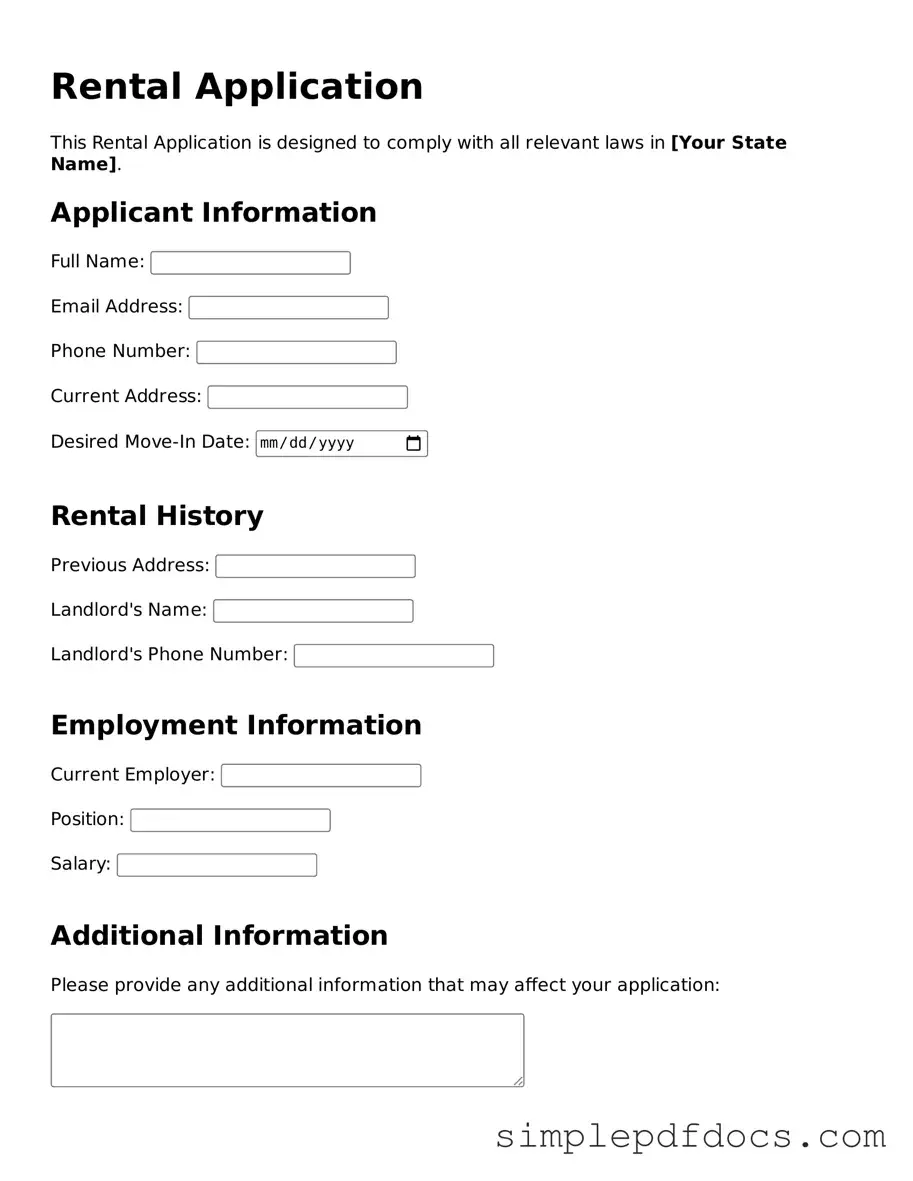When seeking a rental property, completing a rental application form is often one of the first steps prospective tenants must take. This form serves as a crucial tool for landlords and property managers to assess potential renters. It typically includes personal information, such as the applicant's name, contact details, and social security number, which helps verify identity. Additionally, applicants usually provide employment history and income details, allowing landlords to evaluate financial stability. References from previous landlords or personal contacts may also be requested, offering insights into the applicant's rental history and character. Furthermore, the form often contains questions regarding pets, smoking habits, and the number of occupants, which helps landlords determine if the applicant is a suitable fit for their property. Understanding these elements can streamline the rental process and enhance the chances of securing a desired living space.
